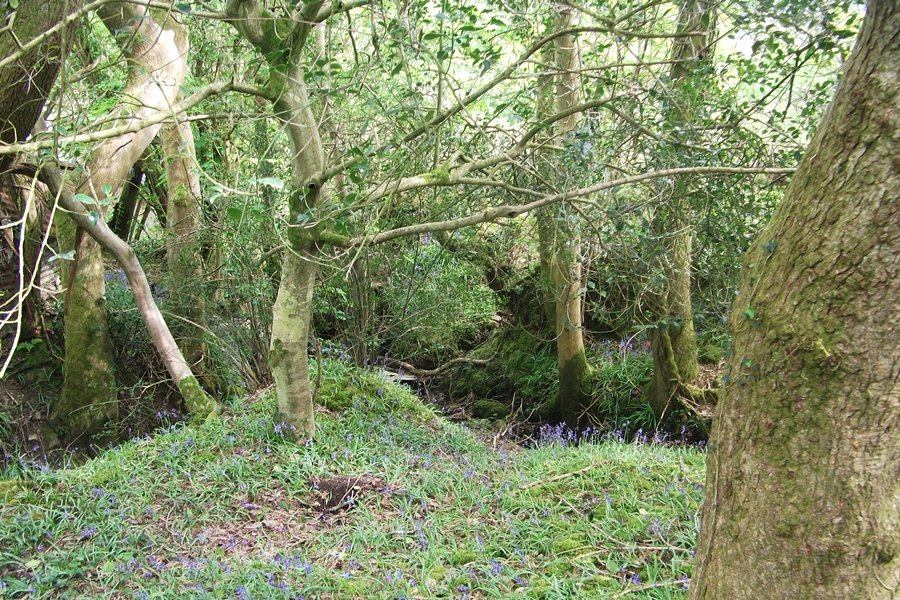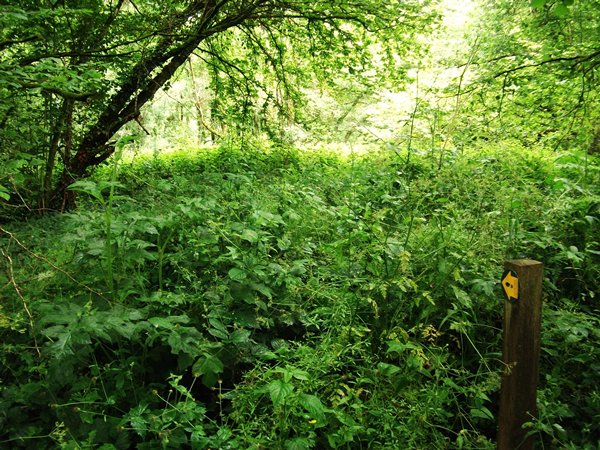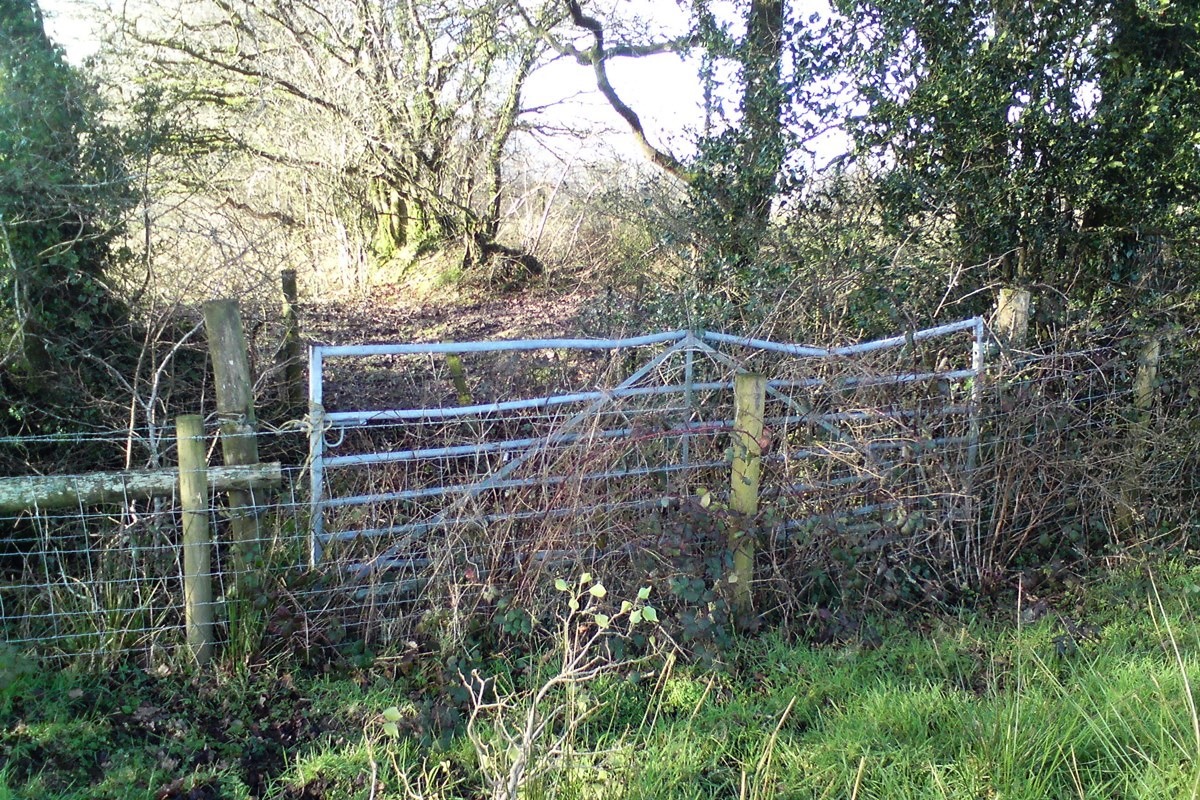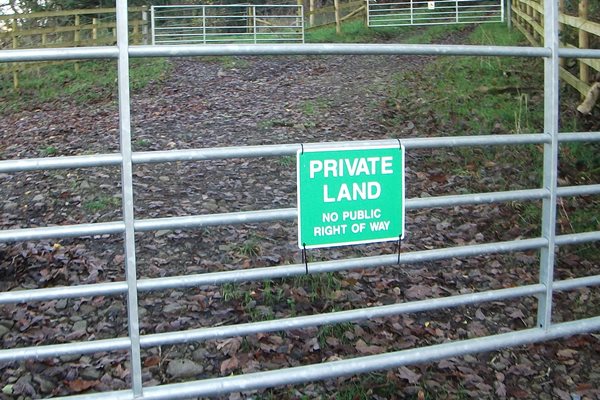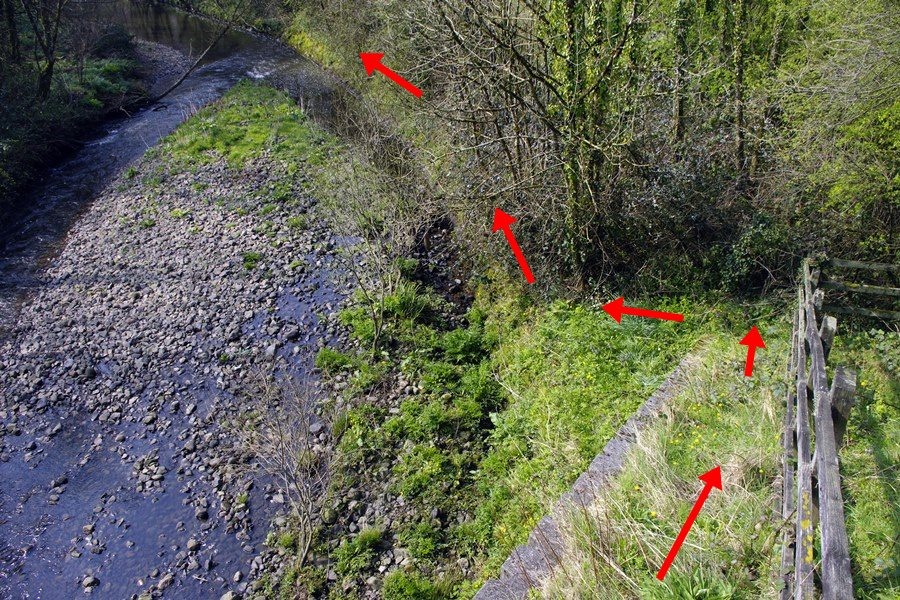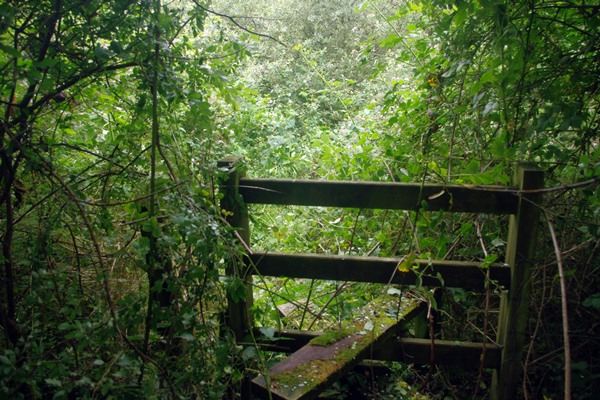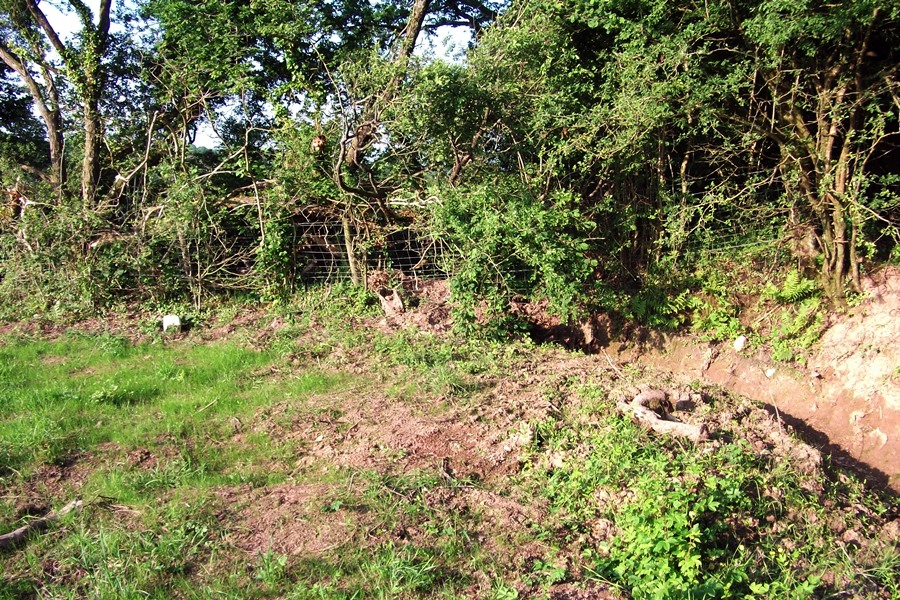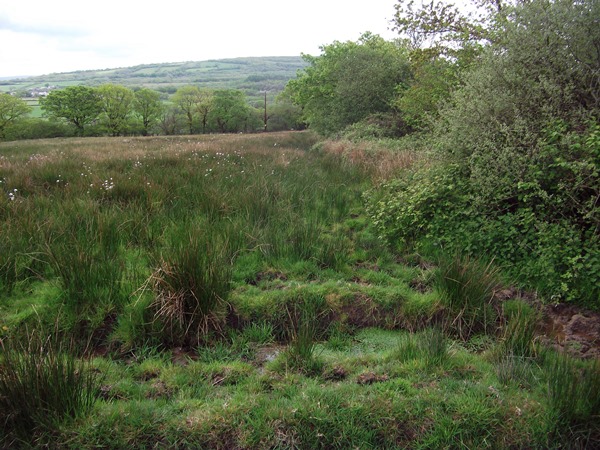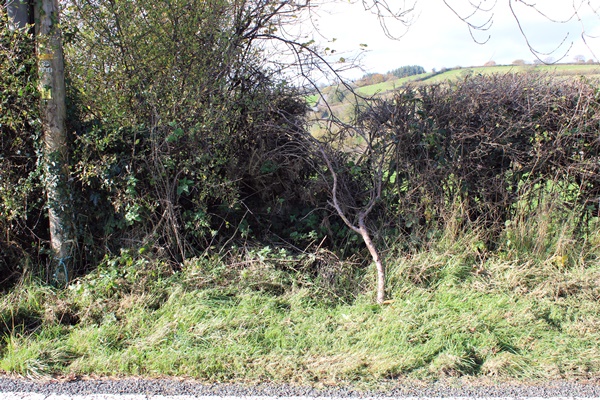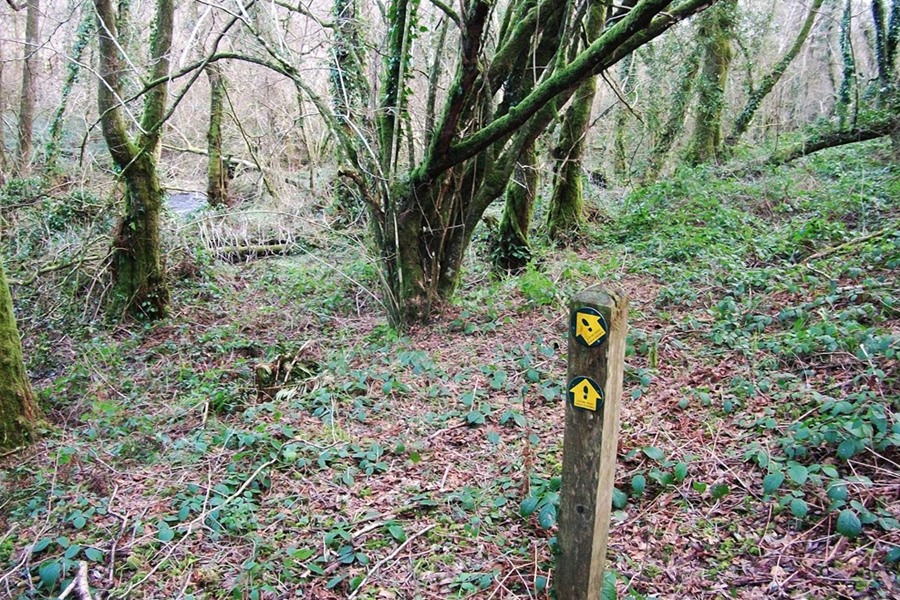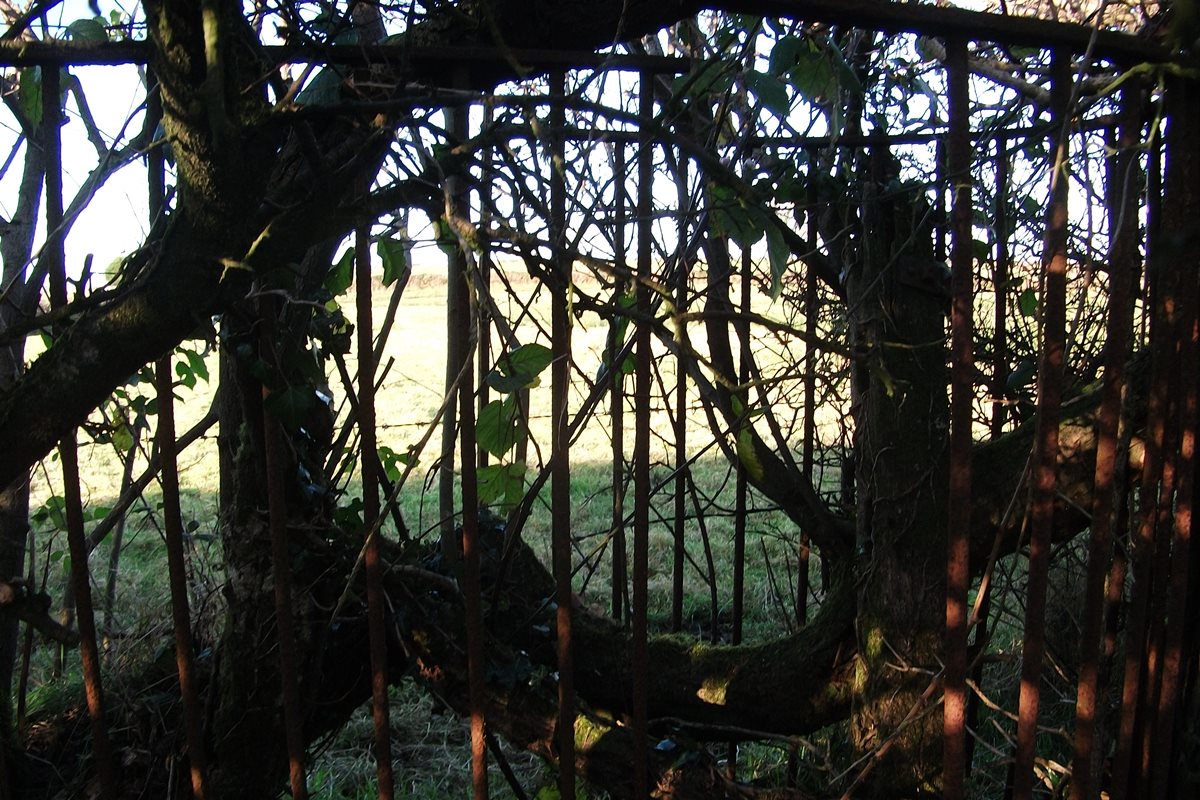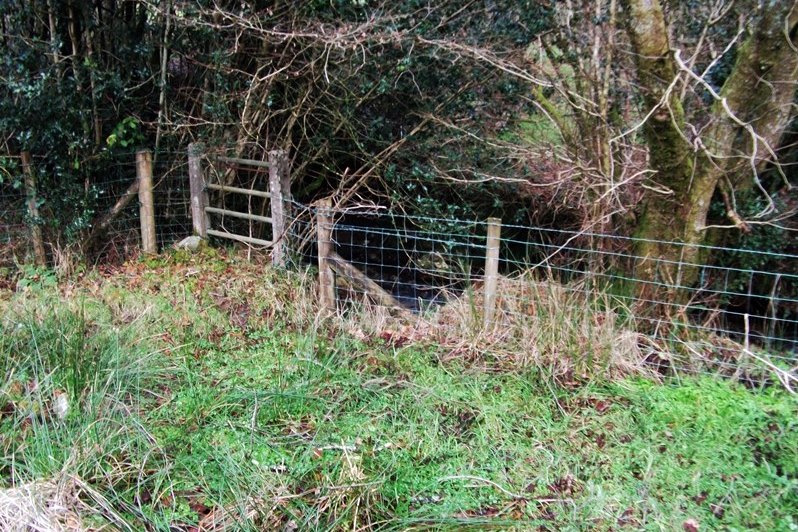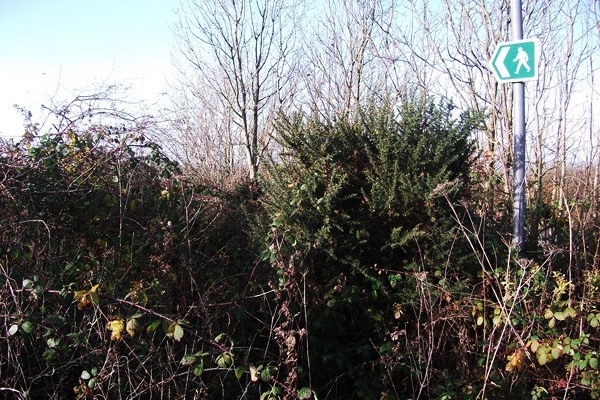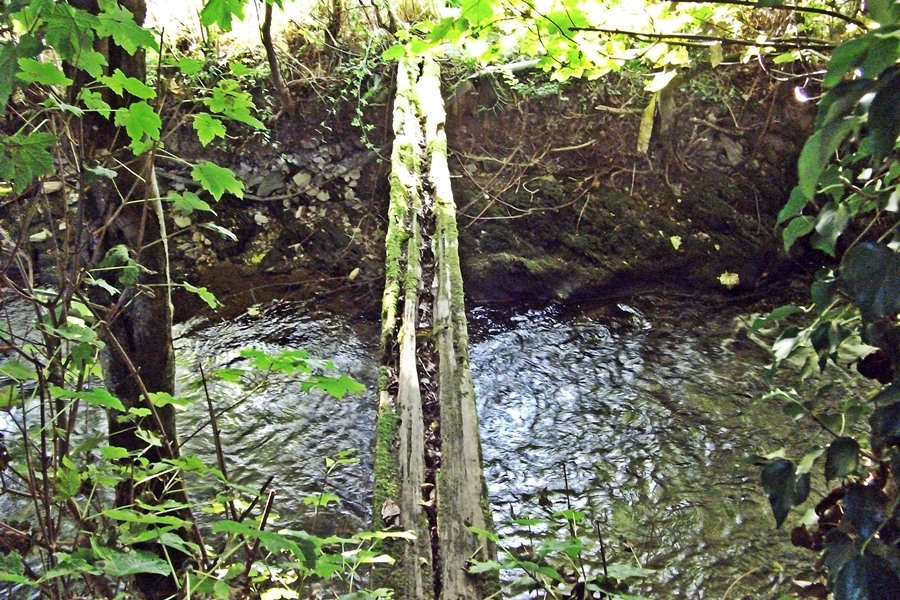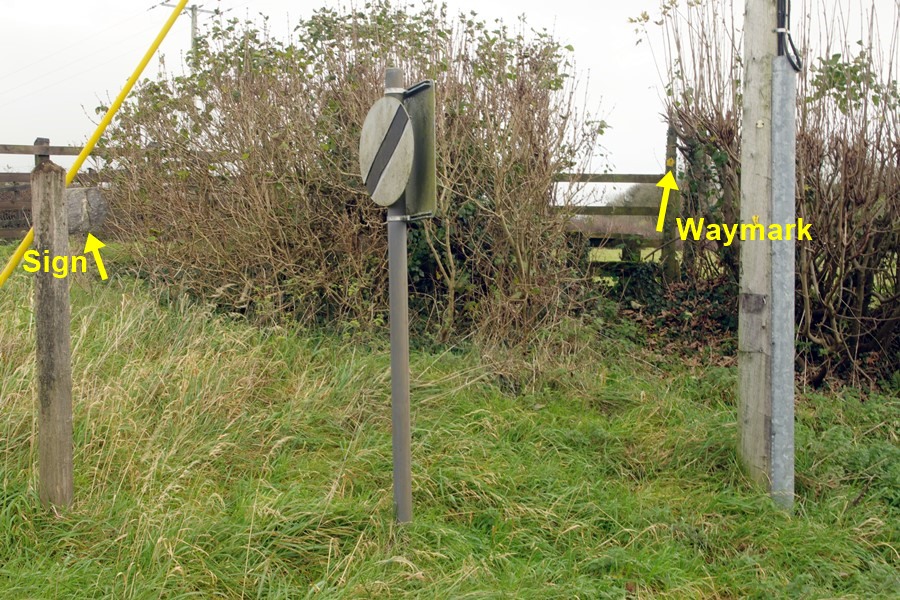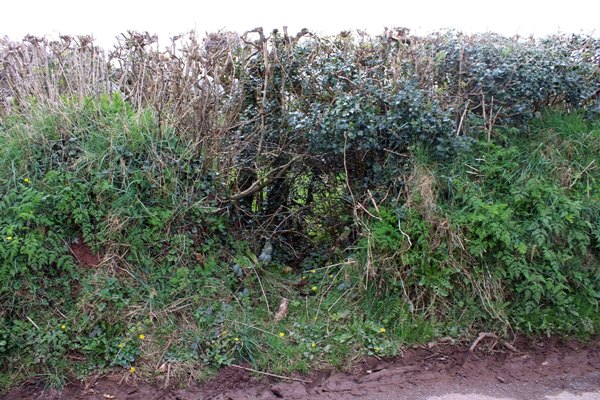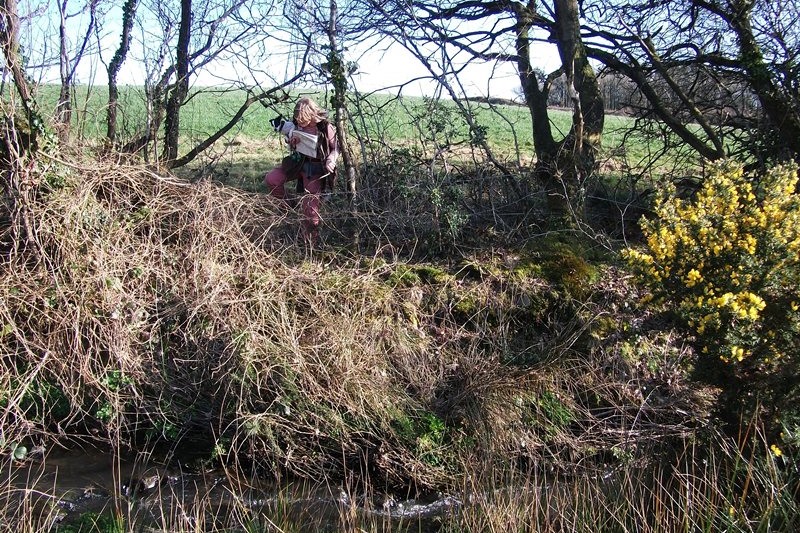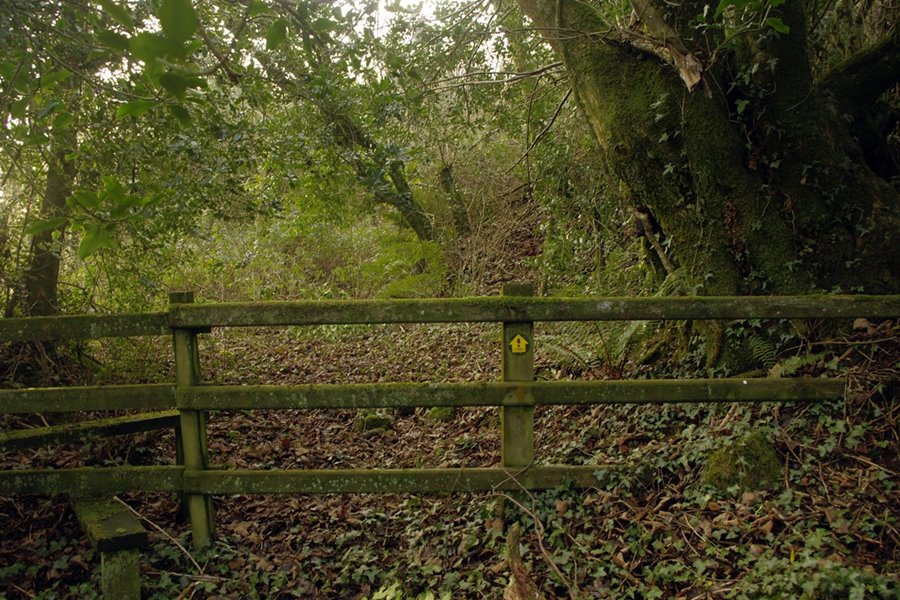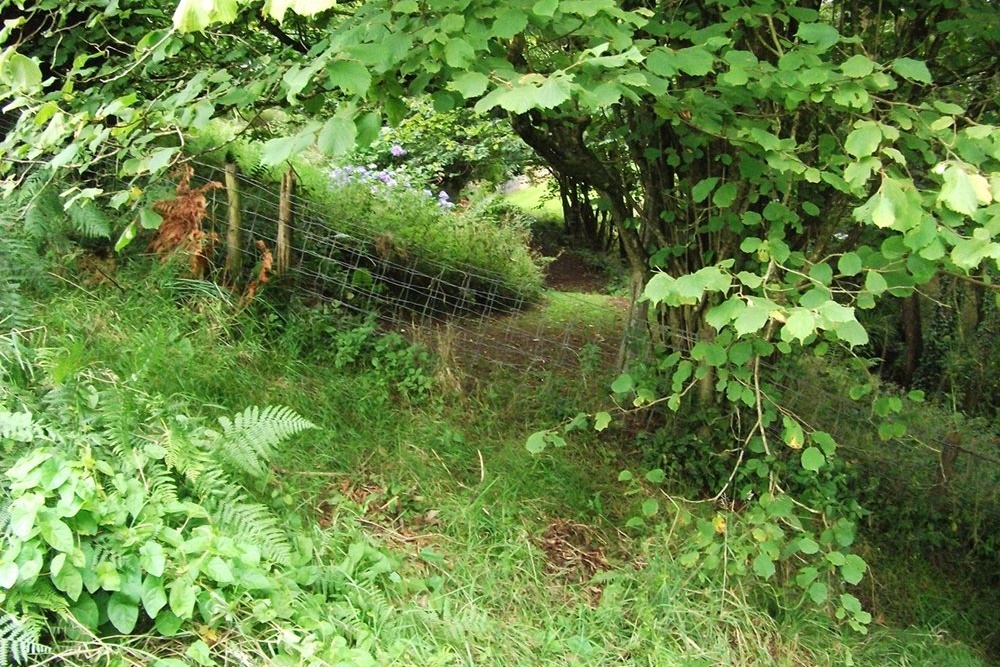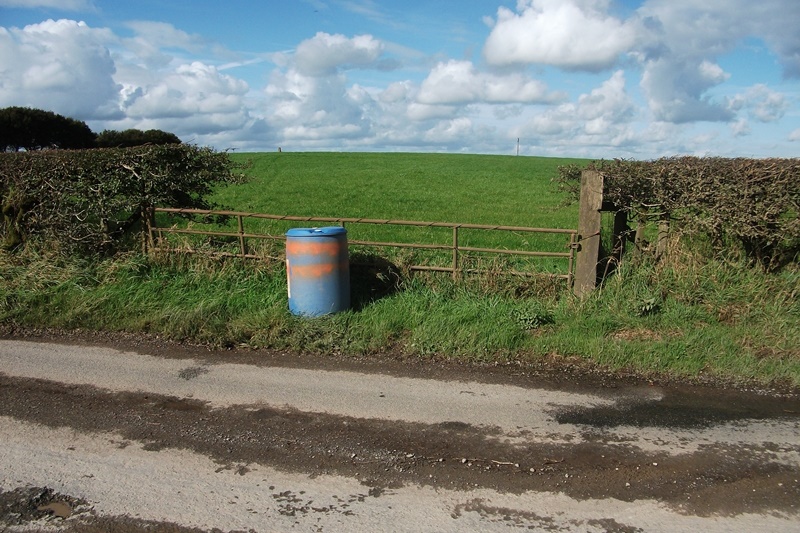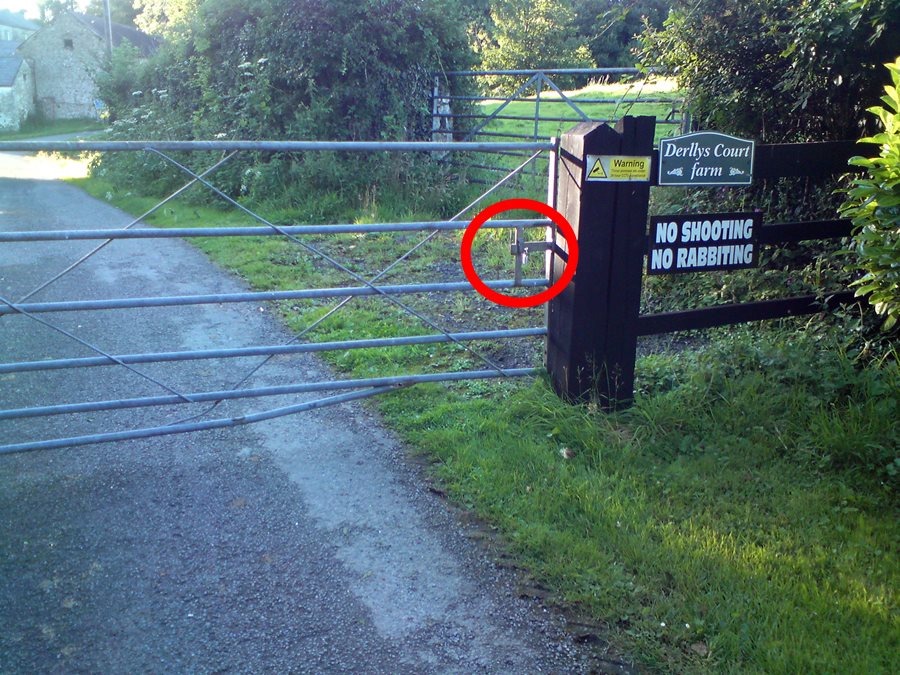
Throughout England and Wales is an extensive network of footpaths and bridleways providing traffic-free access to the wonderful countryside of Britain, but unfortunately, not all of these rights-of-way are properly maintained. Generally speaking, English counties look after their footpaths much better than their Welsh counterparts, and footpaths around the Home Counties are usually very well-maintained, signposted and waymarked. With a few exceptions - notably in the National Parks and the Gower Peninsula - Welsh footpaths are in a sorry state compared to England, and the county of Carmarthenshire ranks bottom of the pile, and is notorious for the appalling condition of its rights-of-way.
In most parts of Britain, it's possible to select a route from an Ordnance Survey map, and have a good chance of being able to walk that route. The chances of completing a walk of your own choosing in Carmarthenshire are negligible, and in many parts of the county even finding a single path which is fit-for-purpose, is extremely low. Paths are frequently overgrown, signposting and waymarking are rare, barbed wire fences across footpaths are common - almost standard, footbridges are often missing or in a dangerous condition, landowners tell you there is no path anymore or you won't get through. I have lost count of the number of landowners who tell me there's no path when they and I know perfectly well that there is. I've also had FIVE landowners try to stop me from walking my local footpaths and had to get the police involved twice. None of this has ever happened in any other county. IT REALLY IS THAT BAD.
| Blaenau Gwent | 85% |
| Swansea | 82% |
| Cardiff | 80% |
| Pembrokeshire | 79% |
| Denbighshire | 72% |
| Vale of Glamorgan | 71% |
| Ceredigion | 59% |
| Isle of Anglesey | 51% |
| Monmouthshire | 51% |
| Carmarthenshire | 41% |
| Figures obtained 2015/16 | |
| West Sussex | 98.0% |
| Devon | 93.5% |
| Gloucestershire | 79.2% |
| Dorset | 70.0% |
| Cheshire | 76.9% |
| Staffordshire | 75.0% |
| North Yorkshire | 74.8% |
| Oxfordshire | 74.0% |
| Shropshire | 73.0% |
| Lancashire | 72.0% |
| Northumberland | 72.0% |
| Derbyshire | 71.8% |
| Durham | 71.3% |
| Monmouthshire | 65% |
| Pembrokeshire | 64.0% |
| Cumbria | 52.2% |
| Herefordshire | 48% |
| Cornwall | 39.0% |
| Gwynedd | 37.0% |
| Powys | 37.0% |
| Carmarthenshire | 31% |
The table on the left shows the figures I've been able to obtain from other Welsh counties, showing the percentage of rights-of-way which are classed as easy-to-use. The figure of 41% for Carmarthenshire (even if it were true - which I doubt) is averaged out over the whole county. Paths in the south and east of the county (and obviously the coast path) are generally in a better condition. To the north and west, the figure is probably below 20%.
The table on the right (which was obviously compiled at a different time), I've found on the internet➀ and lists a selection of English and Welsh counties. No prizes for guessing which county is bottom of the league!
The council's favoured excuse is that they have enough footpaths to reach Aberdeen and back, but a glance at an Ordnance Survey map reveals that the density of rights-of-way in Carmarthenshire is probably less than in other Welsh counties, who are able to keep most of their footpaths in reasonable condition. Despite the fact that Carmarthenshire has one of the lowest percentages of usable footpaths, the official Carmarthenshire Council website has made some outrageous claims over the years, all of which are completely false (see below). Now they've abandoned encouraging walkers to go where they like, and list about 40 set walks (none of which are near Carmarthen) and attempts are made to keep these routes usable. They give a good map of the area showing the local paths and the route they want you to take, but should you try to short-cut onto any of the other footpaths, you'll find the same problems - overgrown paths, barbed wire fences and no waymarking.
Some claims from the official Carmarthenshire website!
I have lived in many parts of England and Wales, and not only have I encountered more problems in this county than everywhere else combined, but the problems here are on a totally different scale. The council's rights-of-way department are seemingly only interested in looking after the Coastal Path and their few chosen walking routes. Anything else is classed as "low priority" and quietly forgotten. Hardly any of the problems I've reported - some going back 10 years - have been resolved and according to a former member of the rights-of-way team, reporting such problems is "petty" and "wasting their time". My advice to any intending walker therefore, is simple :
Don't come to Carmarthenshire
You will regret it.
If you do (foolishly) try to walk Carmarthenshire's footpaths, you'll need a map of at least 1:25000 scale (and be extremely good at map-reading), but be warned; many paths are not open due to unresolved legal issues. Some others have been diverted from the line shown on OS maps, but the council rarely waymark the new route or remove old signage! You'll also need a pair of secateurs to cut overgrowth around stiles and preferably a stick to thrash nettles and brambles - you'll meet plenty of these. A pair of wire-cutters to deal with barbed wire fences would also be useful. You are legally allowed to remove sufficient of an obstruction in order to pass, but only resort to cutting fences if you can't easily get past and you're 100% certain you're in the right place. You'd also be wise to check your route against the council's website, as you'll quite likely have landowners trying to tell you there's no right-of-way across their land.
Where should you walk?
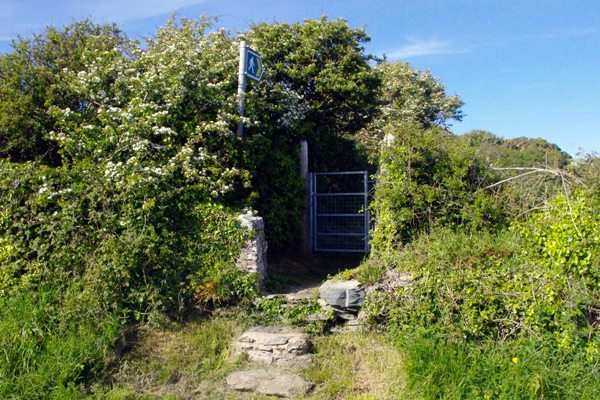 How it should be - a footpath on Anglesey
How it should be - a footpath on AngleseyGower : Footpaths are very well maintained and waymarked, for many you won't even need a map to follow them.
Pembrokeshire : Most paths within the National Park are very well maintained, signposted and waymarked - those outside the Park not so good. Exceptional scenery and a good choice for walking.
Ceredigion : A very hilly county - most footpaths near the coast are in good condition, those away from the coast not so good, but the route is usually evident on the ground.
Anglesey : A very picturesque county, not hilly or mountainous but rarely flat. Nearly all of its footpaths are signposted from the roads with good stiles and gates - although a few have a little overgrowth. I would definitely recommend this county.
Gwynedd : Another county which looks after its footpaths and is a good choice for walking. Most paths signposted with gates and stiles where they should be. Hilly terrain towards the west becoming mountainous to the east.
Have you any experience of walking in Carmarthenshire?If you've tried walking A ROUTE OF YOUR OWN CHOOSING
(selected from a map), please add your own comments here.

